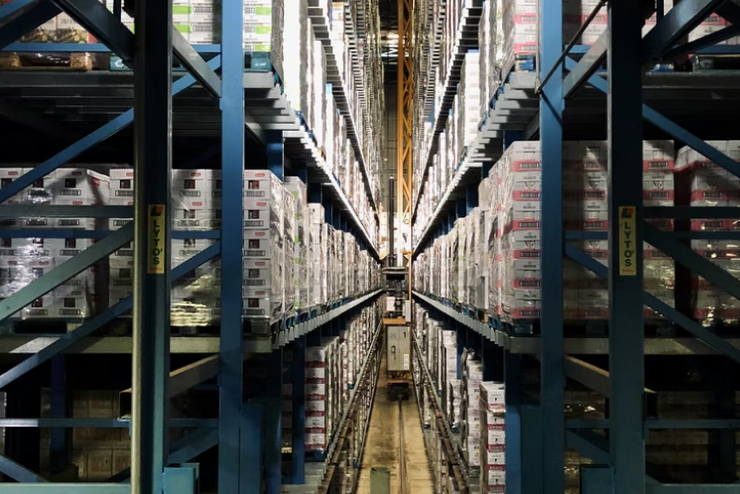'Digital disruption’ describes the change that occurs when the value proposition of goods or services is impacted by digital advancements. It’s a phenomenon with far-reaching impact, spanning industries and business functions alike, while disruptive technologies also impact how we live our day-to-day lives. With the ubiquity of mobile devices, vastly improved mobile data infrastructure and cheaper technology, it’s safe to say that we’ve heralded the fourth industrial revolution.
Despite the economic potential this acceleration in technology can bring to businesses, it’s certainly not without its challenges. The word ‘disruption’ is inherently negative, suggesting a threat to achieving business goals. Businesses that have failed to keep up have felt the economic impact, and there’s talk of ‘victims’ of this disruption.
Manufacturing is one sector for which digital disruption holds challenge and potential in equal measure. The possibilities are particularly pertinent in relation to the supply chain, in terms of streamlining operations and closing gaps that traditional supply chain management couldn’t plug, especially since supply chain management is ever-increasingly complex, in a world of global suppliers, increasing consumer demand and larger operations.
Ultimately, technology could help transform the supply chain into a source of growth and competitive advantage. PWC’s report into How digitization makes the supply chain more efficient, agile and customer-focused stated that “companies with highly digitized supply chains and operations can expect efficiency gains of 4.1 percent annually, while boosting revenue by 2.9 percent a year.” But equally, overhauling end-to-end processes with new system integrations can feel like an unwieldy task. There is little room for error when it’s critical that business operations continue without interruption during the transition.
The question is, are manufacturers realising the value that digitising the supply chain can bring to their business, or are they shying away from progress, taking a ‘head in the sand’ approach that could ultimately lead to a commercial disadvantage?
The facts speak for themselves
The Barclays Corporate Banking Manufacturing Report, Intelligent manufacturing: an industrial revolution for the digital age, whose survey was conducted in late 2017, found that 43 per cent of manufacturers are yet to invest in so-called ‘fourth industrial revolution technologies’, such as artificial intelligence, sensors and nanotechnology. This is despite more than three quarters having adopted basic types of automation, such as robotics.
One of the biggest factors cited for hesitancy to invest is the skills gap. A little over a fifth (21 per cent) of manufacturers said this was their reason for putting off investment. And this misgiving is not entirely unfounded – take sensor technologies as an example. Integrating the technology itself is only step one of the process; what good is the data the technology can produce without analysis? Tech needs the talent behind it to evaluate it and come up with actionable insight.
Full understanding from decision makers is another obstacle that is often mentioned; because some of these technologies can be something of a ‘new frontier’ for many business leaders, there is a lack of confidence to invest.
The drivers
Despite the challenges, it’s critical that these issues are tackled so that the manufacturing sector can reap the benefits of these technologies. While there are obstacles to be overcome, it is worth the investment, both in the remedial actions that need to be taken to overcome the challenges, as well as the capital investment to integrate the technology. Otherwise, businesses risk falling behind.
Here are some of what I see as the biggest benefits of digitising the supply chain:
Data
The most important product of a digital supply chain is the data it puts out. The power of data can introduce efficiencies up and down the chain; from planning to procurement, logistics to warehousing.
Risk mitigation
By using data upfront at the planning stages, it can mitigate risk for the business (and all suppliers involved up and down the chain). While planning has always attempted to do this, the inexact art of forecasting has always lefts businesses vulnerable. All the guesswork can be taken out of supply chain planning by incorporating all the information, such as vendor inventory and demand sensing.
Visibility
Particularly important for logistics, as this area generally has huge potential for disruption. More visibility of complete and timely data means better communication between stakeholders in the supply chain, which means a smoother journey for all.
Delivering value
Procurement 4.0 can result in cost savings and delivering more value. With additional data available, the procurement team can be assured that they are gaining value, rather than simply cutting costs. It is also possible to come up with a lowest cost scenario, communicate this across the supply chain, then make it a reality.
Efficiencies
By improving warehousing efficiencies in smart warehousing, value can be delivered back to both the business and customers, by automating most of the warehousing functions used currently. 3D printing offers boundless potential to make spare parts management more efficient. With on-demand ability to supply parts at pace, it saves the need for additional warehousing.
Ultimately, a digital supply chain can make a manufacturing business significantly more agile. And agility is key in a market where the power lies increasingly with the customer, where a shift in customer demand must mean a shift in production.
Real-time data can help to improve visibility in demand, and limit instances of over- or under-estimating. It can also help make the most of an opportunity if there is a particular surge in demand, giving your business the ability to respond swiftly and capitalise on it. What’s more, this agility can echo through the entire chain, benefiting all businesses involved in delivering a product.


